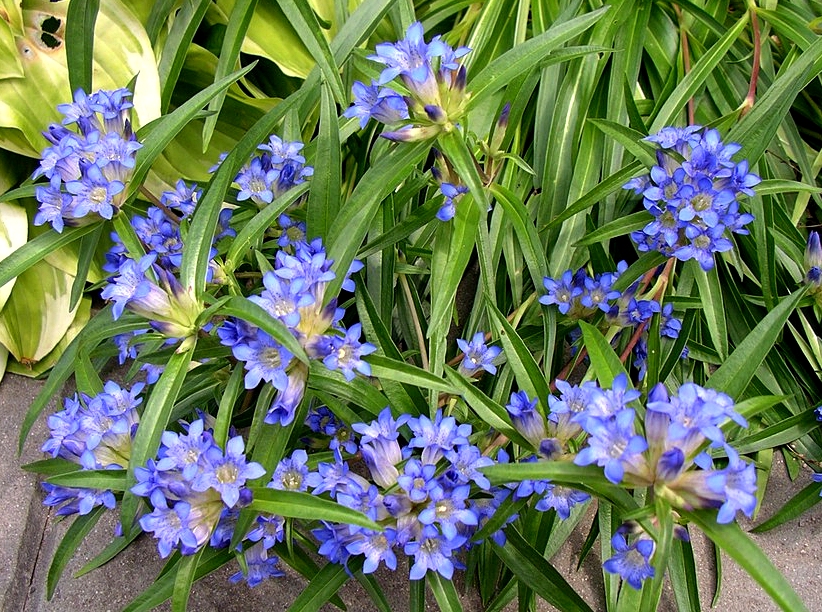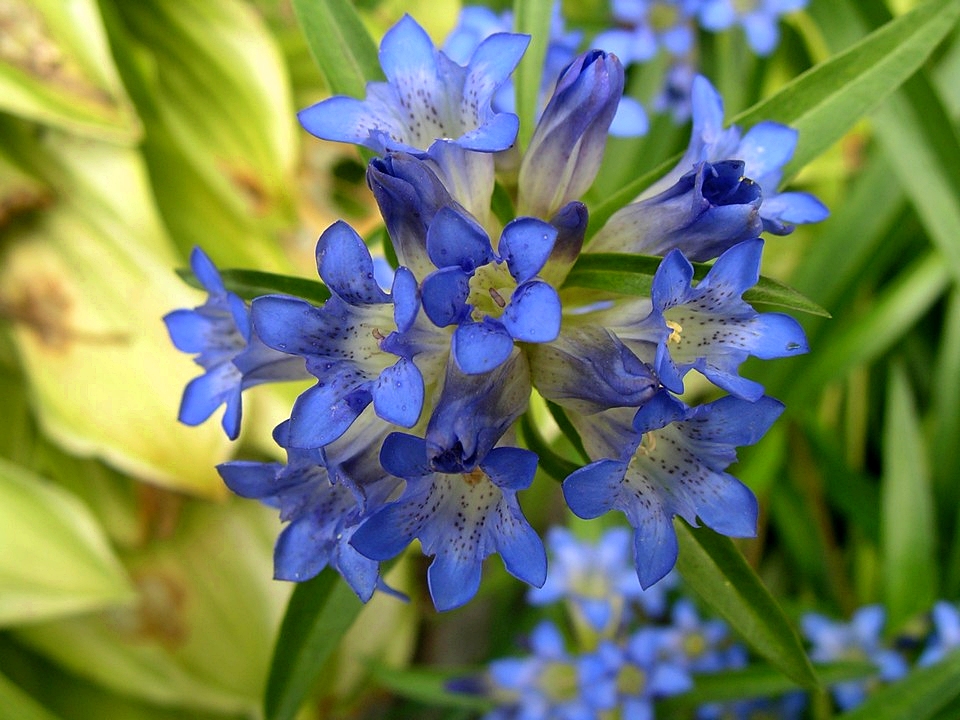Plant of the Month for January, 2012

Gentiana dahurica
(jen-shee-AN-uh da-HYUR-ih-kuh) or (gen-TEE-ah-na da-her-IH-ca)
General Information:
This Gentian is easy to grow making it a good choice as your first Gentian. It is a loose, semi-sprawling plant with lax stems and flowers. As it grows, the stems tend to lie on the ground creating an enlarging mat of bright green grass-like leaves. When grown between other plants it is more upright.
Flowers are blue with white spotted throats and are formed in the leaf axis and at the growing tips. In cooler regions like Ontario it can be grown in full sun where it will flower better than in part shade. It may self sow slightly near the mother plant but is not at all invasive. Once established it seems to be long lived and undemanding.

Gentiana dahurica; photo by Robert Pavlis
The lovely blue flowers and late summer flowering period make this a valuable addition to your garden.
Plants and seeds with the names G. dahurica, G. cruciata, or G. gracilipes are frequently misnamed. G. gracilipes is no longer considered to be a separate species and is a synonym of G. dahurica. G. cruciata is a separate species that is horticulturally very similar to G. dahurica, with both belonging to the subgenus Cruciata. G. cruciata has distinctly ovate foliage, similar to G. acaulis, while G. dahurica has narrow, lanceolate leaves.
For the true collector of rare plants try G. kurroo or G. olivieri which are in the same subgenus and are considered by some to have an even better floral display than G. dahurica.
Life Cycle: perennial
Natural Range: Mongolia, and China
Habitat: Grassy sunny slopes, roadsides, stream banks, sandy places around lakes, sunny slopes, dry steppes and the edges of cultivated land at elevations of 800 - 4500 meters
Synonyms: G. gracilipes, G. campanulata, G. biflora, G. kurroo brevidens
Height: 20 cm (8in)
Bloom Time: late summer, early fall

Gentiana dahurica; photo by Robert Pavlis
Cultivation:
Light: sun to part shade
Soil: normal well draining with some humus, flexible on pH
Water: moderately moist
USDA Hardiness Zone: 4 to 8
Propagation: division, basal cuttings in late spring and late summer, and seed
Seedex availability (ORG&HPS annual Seed Exchange): available most years
Germination Tips:
Germination is improved by using GA3. See http://botanicallyinclined.org/fridays-seeds-with-the-ga3-seeds-treatment
Give sown seeds several weeks @ 20°C to imbibe water (perhaps even germinate!), then expose to fluctuating outdoor winter temperatures including freezing for 3 months. Gradually increase light and temperature in spring. See https://www.youtube.com/watch?v=SO_KKbGYTEM
Special Care:
hard to germinate, avoid pricking out individually, transplant seedlings in clumps
Contributions to this page were made by: Robert Pavlis, Barrie Porteous
